If you’re looking for a place where fairytales come to life, look no further than Bavaria. This stunning region in Germany is packed with awe-inspiring castles, charming villages, and nature so jaw-dropping it feels like a dream. From the towering spires of Neuschwanstein Castle to the serene beauty of the Bavarian Alps, there’s something undeniably magical about this region. I’ve had the pleasure of wandering through its cobblestone streets and hiking up mountain trails, and each experience feels like stepping into a living postcard. If you’re craving a mix of rich history, breathtaking landscapes, and unforgettable moments, Bavaria is calling. Here are 15 must-visit spots that will make you fall in love with this enchanting part of Germany.
Best Sights and Attractions in Bavaria
Ready to explore Bavaria? From historic cities and cultural landmarks to tranquil escapes in nature, this region has it all. Discover the must-see attractions that showcase the best of Bavarian life and culture!


1. Visit Neuschwanstein Castle
Perched above Hohenschwangau Valley, Neuschwanstein Castle feels like a real-life fairytale. King Ludwig II built it as a private escape, but today, millions visit to explore its grand halls and sweeping mountain views. A guided tour takes you through rooms like the Throne Room and Singer’s Hall, where murals and chandeliers reflect Ludwig’s love for opera and mythology.
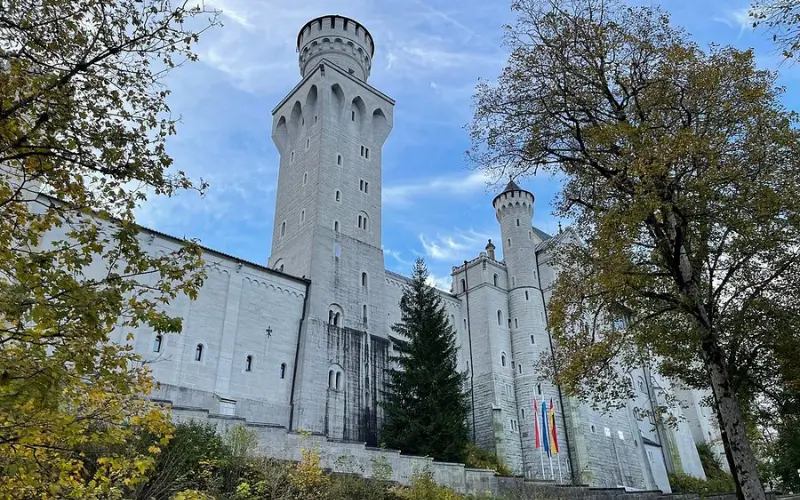
Outside, Marienbrücke offers the best vantage point for photos, hanging high over Pöllat Gorge with the castle in perfect view. The first time I visited, I almost skipped the bridge because of the crowds, but waiting paid off—the view was worth every minute. Hike up from Hohenschwangau village or take a shuttle for a quicker route.
Winter brings a quieter, snow-covered scene, making the castle feel even more magical. Whether you tour its opulent rooms or admire it from the valley, Neuschwanstein is one of Bavaria’s most unforgettable experiences.
- This Neuschwanstein and Linderhof tour from Munich includes skip-the-line tickets and luxury coach transport.

2. Go canyoning in the Starzlachklamm gorge
Adrenaline hits from the moment you step into the Starzlachklamm gorge. I’ve done plenty of canyoning tours, but the combination of high jumps, rushing water, and that final slide at Rudi’s gorge hut makes this one stand out. The guides take time with everyone, showing how to navigate each section safely while pointing out fossils and old water mills along the way.
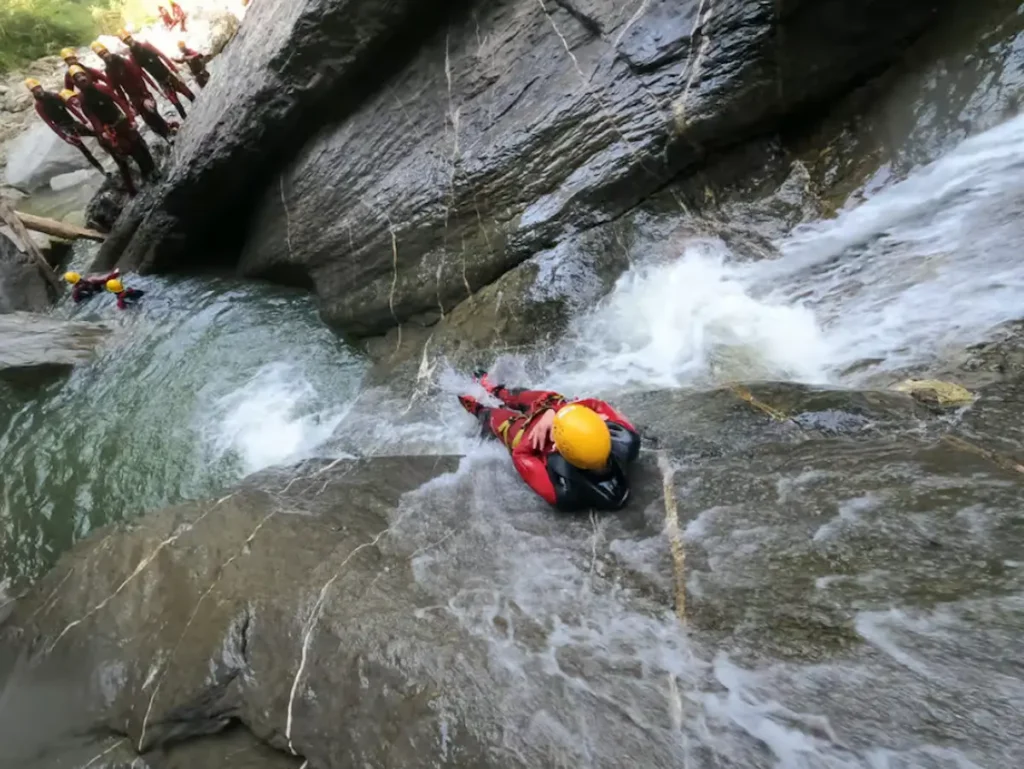
The neoprene suits keep you warm even in colder weather, and special canyoning shoes give you confidence on slippery rocks. Beginners and pros alike can pace themselves, skipping jumps if needed, while still feeling the power of the gorge.
Afterwards, stop at Klammwirt Rudi or Seppl-Wirt for hearty Bavarian dishes. Bring a towel and dry clothes, because after 3.5 hours in the gorge, you’ll want a proper warm-up.
3. Watch the Glockenspiel at Marienplatz in Munich
In the heart of Munich, Marienplatz buzzes with energy, but twice a day, all eyes turn upward to the Neues Rathaus (New Town Hall). At 11 a.m. and 12 p.m. (plus 5 p.m. in summer), the Glockenspiel comes to life, reenacting Bavarian history with colorful, moving figurines. The chimes echo through the square as knights joust and dancers spin in celebration. You’ll definitely want to add this to your travel itinerary.
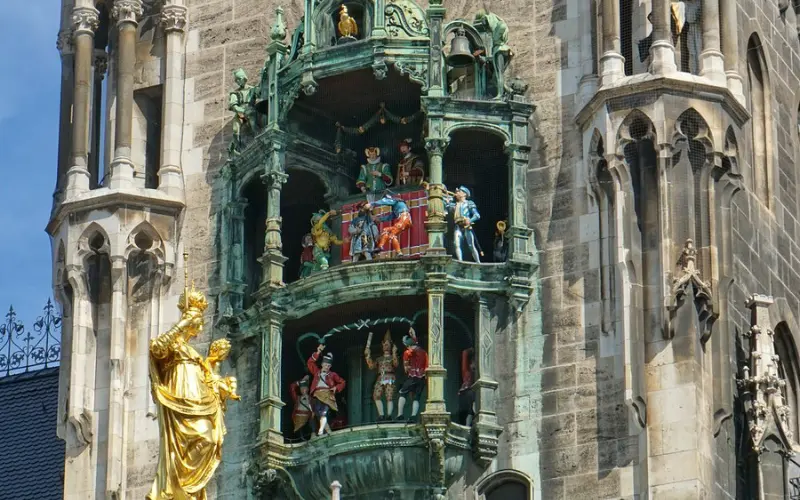
The first time I watched, I expected a quick show, but the detailed performance had everyone—locals and tourists alike—completely mesmerized. Arrive early for a good spot, or grab a coffee from a nearby café and enjoy from a distance. Afterward, climb the St. Peter’s Church tower for the best panoramic view of Munich.
Beyond the clock, Marienplatz is perfect for exploring. Wander through Viktualienmarkt, visit the Frauenkirche, or shop along Kaufingerstraße. Whether you’re here for history or the lively atmosphere, Marienplatz delivers.

4. Ride the cable car up Zugspitze
At 2,962 meters, Zugspitze is Germany’s highest peak, offering unbeatable views of the Bavarian Alps. Whether you ride the Zugspitze Cable Car from Eibsee or take the cogwheel train from Garmisch-Partenkirchen, the journey itself is as breathtaking as the summit.
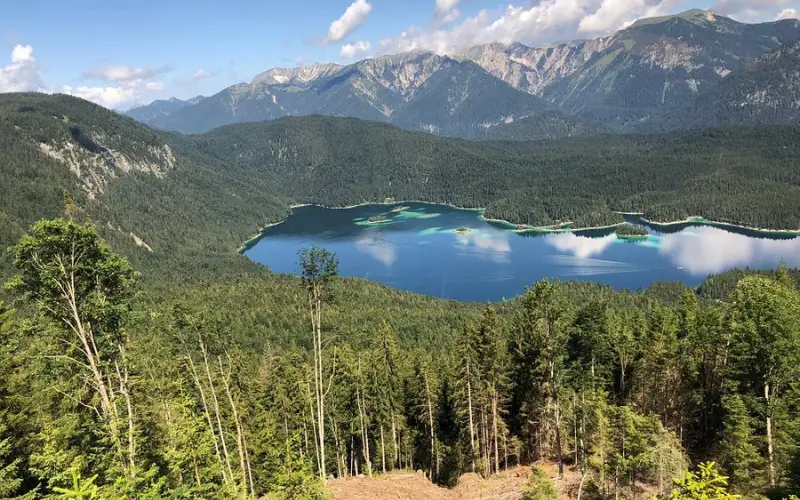
Reaching the top, I was stunned by the 360-degree panorama, stretching across four countries. In winter, Zugspitze Glacier Ski Resort offers some of the best slopes in Germany, while summer invites hikers to explore rugged alpine trails. The Summit Cross, perched at the very top, is worth the short but steep climb for a true sense of accomplishment.
Warm up with a meal at the Panorama 2962 restaurant, or cross into Austria without a passport at the Tiroler Zugspitzbahn station. Whether you’re skiing, hiking, or just soaking in the views, Zugspitze is an unmissable alpine adventure.
- Want a guided experience? This private Zugspitze tour from Munich includes cable car tickets and lunch.

5. Taste Bavarian food on a Munich old town tour
Munich’s Old Town comes alive through its food, and this walking food tour delivers a perfect mix of history and flavor. Sampling pretzels, weisswurst, artisanal cheeses, and local beers while wandering the cobbled streets gives a real taste of the city. The small group size means the guide can share little-known stories about each stop, from centuries-old inns to bustling market stalls.

We made our way through Viktualienmarkt, sampling honey wine, Leberkäse, and a surprise dish. The guide’s knowledge of Bavarian culture and culinary history added depth to every bite. The portions were generous, and the walking was manageable, even with plenty of tasting stops along the route.
Make sure to save room for dessert at Munich’s oldest patisserie, it’s a sweet finish worth lingering for. Comfortable shoes and an appetite are essential!
6. Tour Munich’s royal palaces, Nymphenburg and the Residenz
Munich’s royal past shines through at Nymphenburg Palace and the Residenz, two of Bavaria’s most stunning palaces. Nymphenburg, set among sprawling gardens, once served as the summer retreat for Bavarian rulers. Its grand Stone Hall and intricate Gallery of Beauties offer a glimpse into 18th-century luxury.
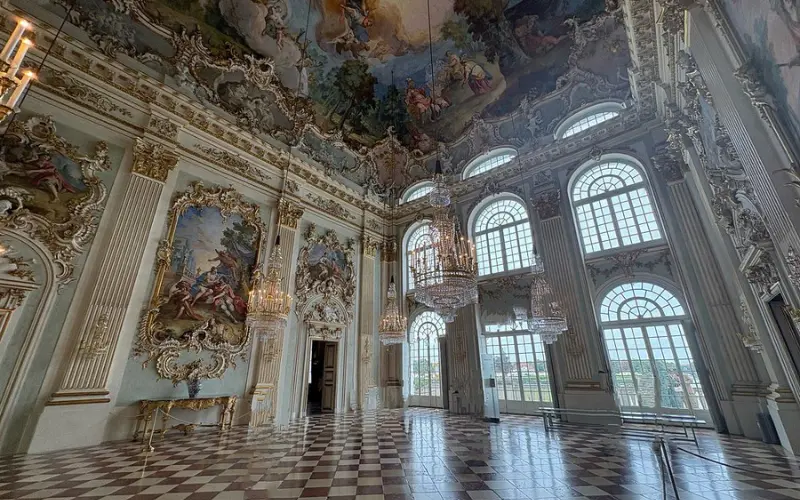
Stepping inside, I couldn’t believe the sheer size of the Residenz—over 130 rooms, each more extravagant than the last. The Antiquarium, with its vaulted ceiling and Renaissance frescoes, felt like stepping into another era. Don’t miss the Treasury, home to royal jewels and Bavaria’s priceless crown.
Outside, the Nymphenburg Gardens invite leisurely strolls past fountains and swan-filled lakes. If you have time, take a gondola ride along the palace canal. Whether you visit one or both, these palaces reveal Munich’s royal grandeur at its finest.
- A Nymphenburg Palace VIP tour includes tickets and insights into Bavaria’s royal history.

7. Hang out in Munich’s Englischer Garten
Bigger than New York’s Central Park, Englischer Garten is Munich’s green escape. Locals jog, picnic, and surf here—yes, surf! At the Eisbach Wave, surfers take turns riding the man-made river wave, a sight that never fails to draw a crowd.
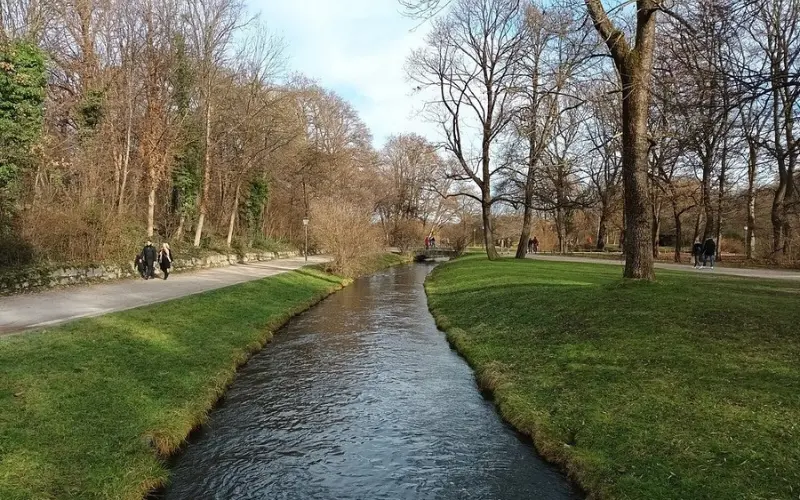
The first time I visited, I stumbled upon the Chinese Tower Beer Garden, where locals and tourists gathered under chestnut trees with steins of beer. If you’re up for a walk, head to the Monopteros, a hilltop pavilion with stunning city views. In summer, paddle a boat along the Kleinhesseloher See, or simply stretch out on the grass and people-watch.
For a real taste of Bavarian leisure, grab a pretzel and beer from one of the many kiosks. Whether you’re here for a morning jog or an afternoon beer, Englischer Garten is the perfect place to unwind.
- For a relaxed ride, this private English Garden rickshaw tour covers highlights like the Chinese Tower.

8. Learn to make apple strudel in a local’s kitchen
Step into a cozy kitchen in Wörth and discover the art of making traditional Bavarian apple strudel. The class moves at a relaxed pace, perfect for first-timers or anyone who loves hands-on cooking. Michaela walks through each step, from preparing the dough to peeling and filling the apples, offering tips that only a lifelong baker could know.
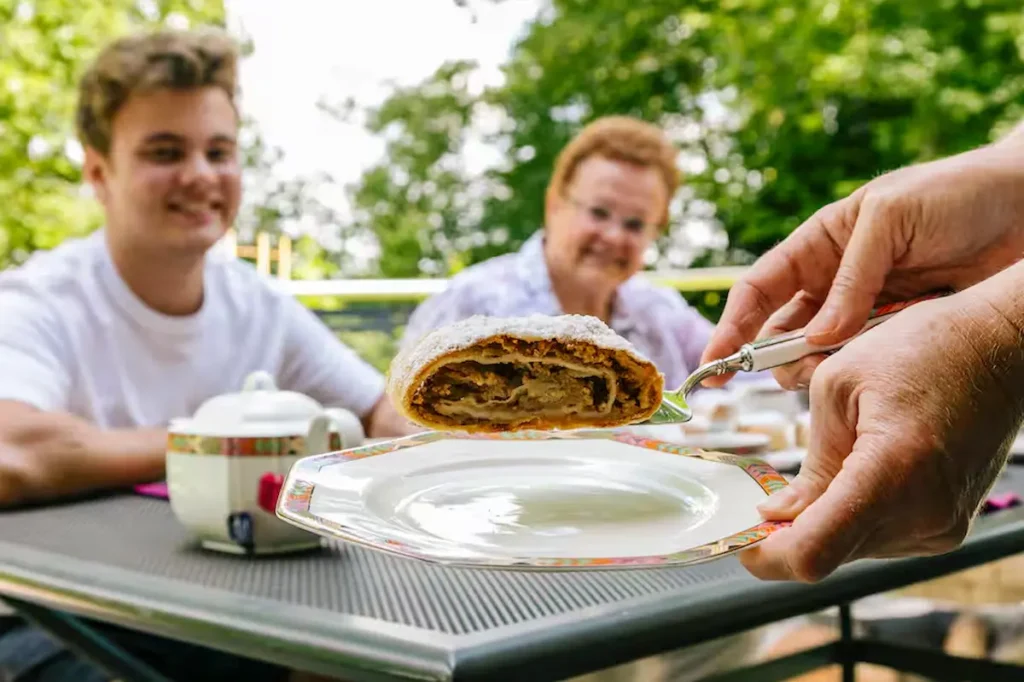
The joy comes from rolling your own strudel and then savoring it fresh with a hot drink. I found the process surprisingly meditative, and tasting my creation afterward made all the effort worthwhile. The class is small, so everyone gets individual attention and plenty of chances to ask questions.
Bring a camera for the garden tea setting, it’s perfect for photos, and save the recipe to recreate the magic at home.
9. Walk through Rothenburg on the Romantic Road
Few places capture old-world charm like Rothenburg ob der Tauber. As part of the Romantic Road, this medieval town boasts cobblestone streets, half-timbered houses, and perfectly preserved city walls. Walking through the Marktplatz, it feels like stepping into a storybook.
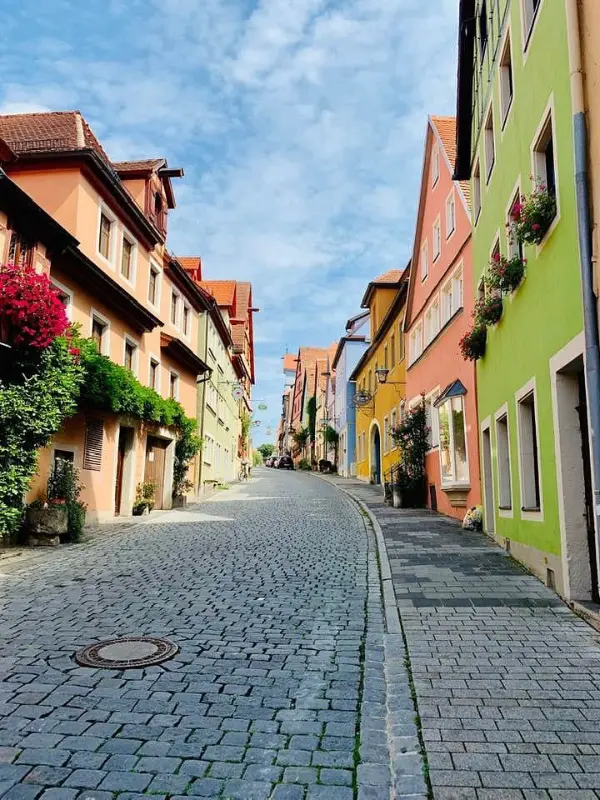
I almost skipped the Medieval Crime Museum, but its bizarre collection of ancient punishments turned out to be one of the most fascinating stops. The Plönlein, the town’s most iconic viewpoint, is worth visiting early before the crowds roll in. In December, the Reiterlesmarkt transforms the town into a Christmas wonderland with twinkling lights and mulled wine.
For a unique experience, join the Night Watchman’s Tour, where a cloaked guide shares eerie tales of Rothenburg’s past. Whether you’re here for history, shopping, or just the fairytale vibe, Rothenburg is a must-visit on Bavaria’s Romantic Road.
- This private Rothenburg walking tour covers medieval history and landmarks with a local guide.

10. See King Ludwig’s Linderhof Palace
Tucked deep in the Bavarian Alps, Linderhof Palace is King Ludwig II’s most personal creation. Unlike his other grand projects, he actually lived here, surrounding himself with lavish designs and extravagant details. Inspired by Versailles, the palace is smaller but just as opulent, with gold-trimmed halls, mirrored walls, and a private grotto that once staged Wagnerian operas.
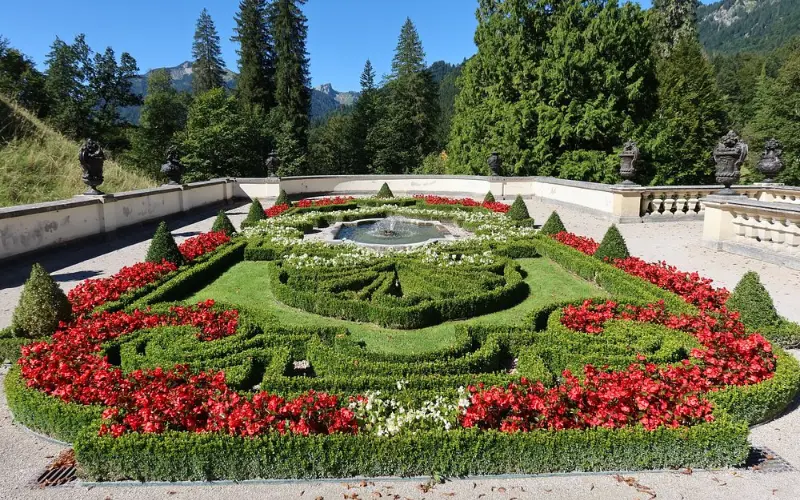
Walking through the Hall of Mirrors, I could almost imagine Ludwig pacing its gleaming floors at night, lost in his dreams of a perfect kingdom. Outside, the formal gardens feature cascading fountains, pavilions, and a Moorish Kiosk with a glittering peacock throne.
Arrive early to explore before tour groups flood in, and don’t miss the Venus Grotto, an artificial cave with a glowing blue lake. Whether you visit for its extravagant interiors or the peaceful alpine setting, Linderhof is a palace like no other.
- Visiting both palaces? This Neuschwanstein and Linderhof day tour from Munich covers both castles.

11. Boat across Königssee and visit the Eagle’s Nest
Crystal-clear and surrounded by steep cliffs, Königssee is Bavaria’s most stunning lake. A boat ride from Schönau glides past towering rock walls, where boatmen pause to play a trumpet, letting the echo bounce back across the water. The ride stops at St. Bartholomä, a postcard-perfect chapel with deep red onion domes.
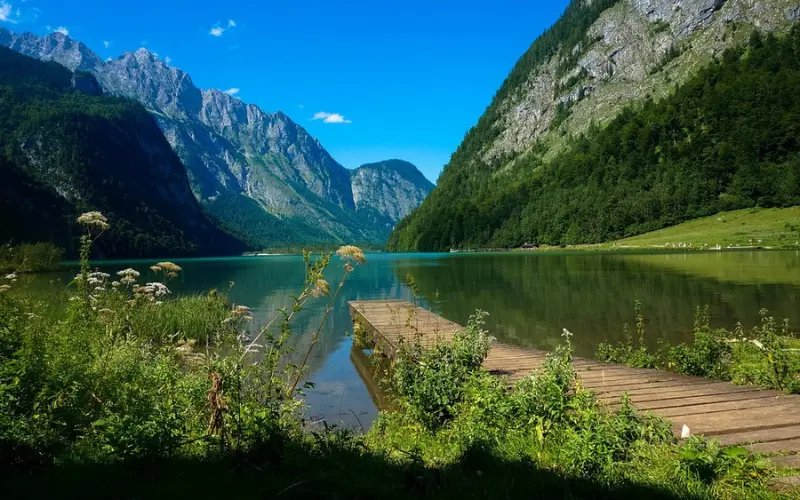
I took the short hike to Eiskapelle, a hidden ice cave at the base of Watzmann Mountain, and was stunned by its shimmering blue ice, even in summer. For a historical twist, visit the Kehlsteinhaus (Eagle’s Nest), a mountaintop retreat once built for Hitler. Today, it serves as a restaurant with sweeping views over Austria and Germany.
For the best experience, visit Königssee in the morning when the lake is at its calmest, and the crowds are few. Whether you’re here for the scenery or the history, this region leaves a lasting impression.
- This Königssee day trip from Munich includes the boat ride and salt mine tour.

12. Explore medieval Regensburg
One of Germany’s best-preserved medieval cities, Regensburg blends ancient Roman ruins, Gothic cathedrals, and lively beer gardens. The Stone Bridge, built in the 12th century, still stands strong over the Danube River, connecting the city’s past to its vibrant present.
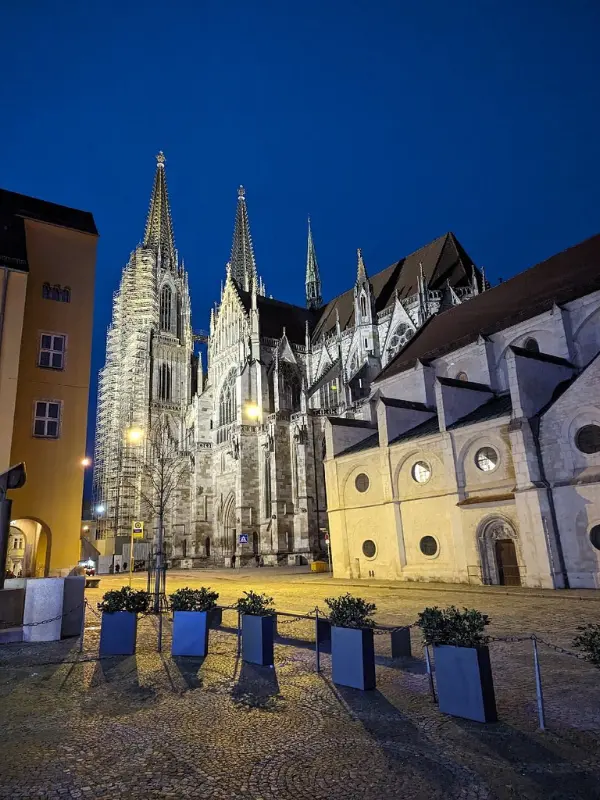
Strolling through the Old Town, I stumbled into a cozy courtyard café and ended up chatting with locals over a cold Augustiner beer. The city’s highlight, the Regensburg Cathedral, impresses with its twin spires and world-famous Domspatzen boys’ choir. For a more interactive experience, step inside the Document Neupfarrplatz, an underground museum revealing layers of Roman, Jewish, and medieval history.
Don’t leave without trying Wurstkuchl, a sausage kitchen serving bratwurst for over 500 years. Whether you’re drawn to its history, architecture, or riverside charm, Regensburg is a city that rewards exploration.
- Read Next: 30 Best UNESCO World Heritage Sites to Visit

13. Visit the Dachau Concentration Camp Memorial
A visit to Dachau Concentration Camp Memorial is a sobering but essential experience. As the first Nazi concentration camp, Dachau serves as a powerful reminder of history, with preserved barracks, watchtowers, and chilling personal accounts.
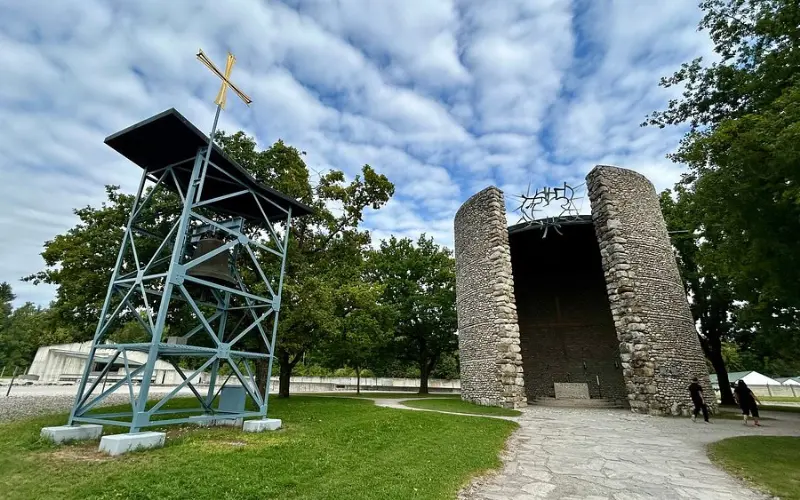
Walking through the Jourhaus gate, where prisoners once read the deceptive phrase “Arbeit macht frei” (Work sets you free), sent shivers down my spine. The museum exhibits, filled with survivor testimonies and haunting photographs, make it impossible to forget the suffering that took place here. A guided tour provides deeper insight into the camp’s role in World War II and its lasting impact.
The Memorial Chapels and Sculpture of the Unknown Prisoner offer spaces for reflection. Plan at least half a day to absorb the weight of history, and consider pairing your visit with a stop in Munich’s Jewish Museum for further context.
- For deeper context, this Dachau memorial tour from Munich includes train transport and a guide.

14. Tour Herrenchiemsee Palace on an island
Set on an island in Chiemsee Lake, Herrenchiemsee Palace is King Ludwig II’s unfinished tribute to Versailles. The ferry ride to the island builds anticipation, revealing glimpses of the palace through the trees. Once inside, the Hall of Mirrors stuns with glittering chandeliers and walls lined with gold leaf—an even grander imitation of Versailles.
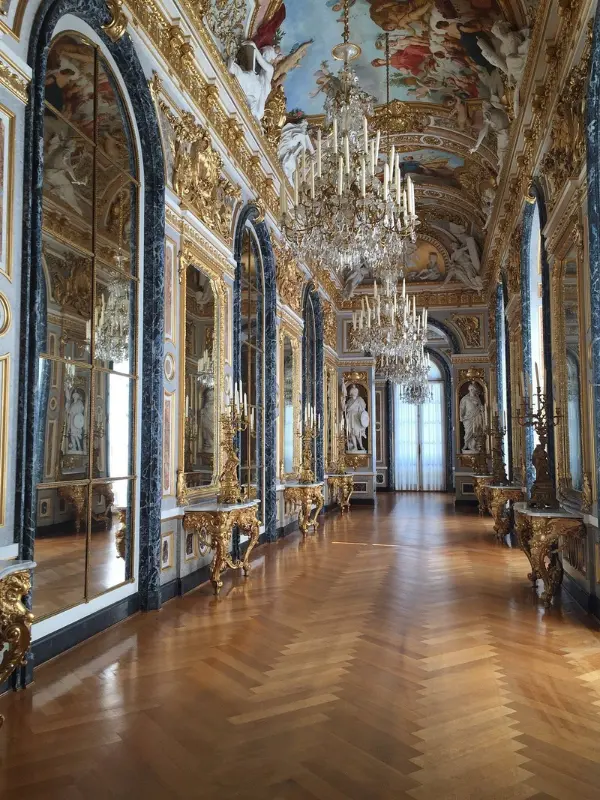
I took a moment in the King’s Bedroom, where extravagant blue and gold silk drapes frame an enormous bed that Ludwig never actually slept in. The State Staircase and Royal Apartments showcase his obsession with perfection, while the palace gardens, filled with fountains and sculptures, offer a peaceful retreat.
After the tour, stroll the island’s forested trails or hop over to the smaller Fraueninsel, home to a historic monastery and charming lakeside beer gardens. If you love castles but want a less crowded experience than Neuschwanstein, Herrenchiemsee is a perfect choice.
- Skipping the logistics? This Herrenchiemsee Palace rail trip from Munich includes train and ferry transport.

15. Hike through Bavarian Forest National Park
Bavarian Forest National Park offers endless trails, wildlife, and fresh mountain air. As Germany’s first national park, it connects with the Bohemian Forest, forming Central Europe’s largest protected woodland. Hikers, cyclists, and nature lovers come here to explore its vast landscapes.
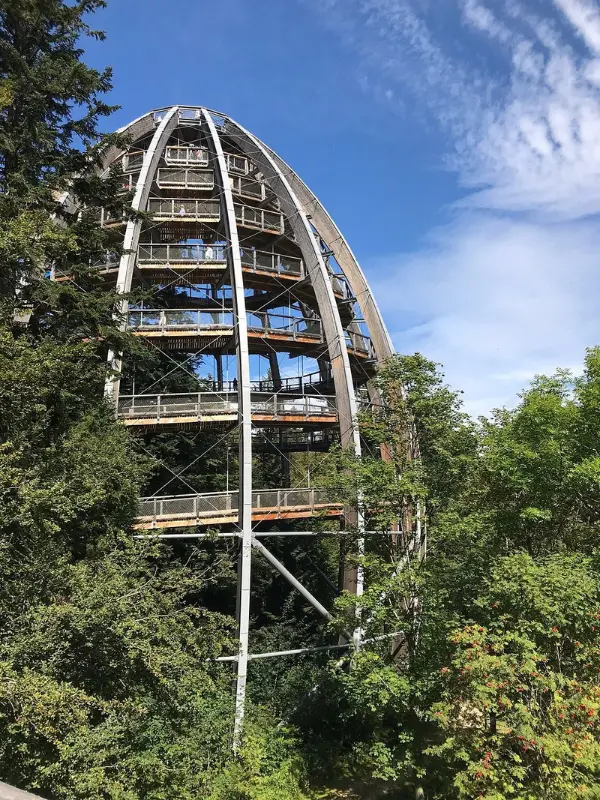
I started with the Treetop Walk (Baumwipfelpfad), a wooden path leading to a 44-meter-high tower with sweeping forest views. For a challenge, the Lusen Summit Trail rewards hikers with a rocky peak and panoramic scenery. The Animal Open-Air Enclosure provides a chance to see lynxes, wolves, and bison up close.
In winter, the park transforms into a hub for cross-country skiing and snowshoeing, with quiet trails through the snow-covered trees. Whether you’re here to hike, spot wildlife, or just enjoy the peaceful setting, Bavarian Forest National Park is a perfect escape into nature.






